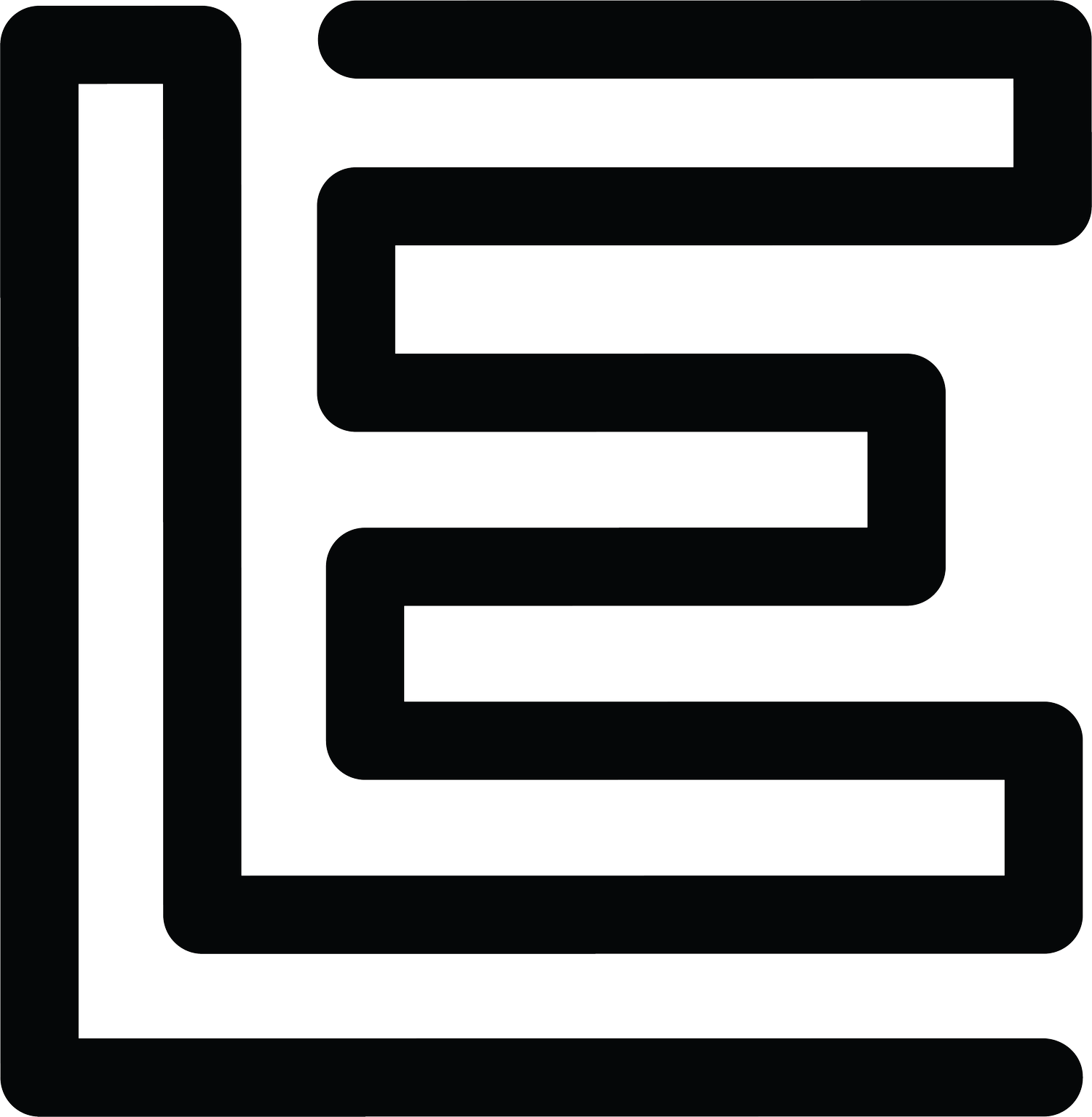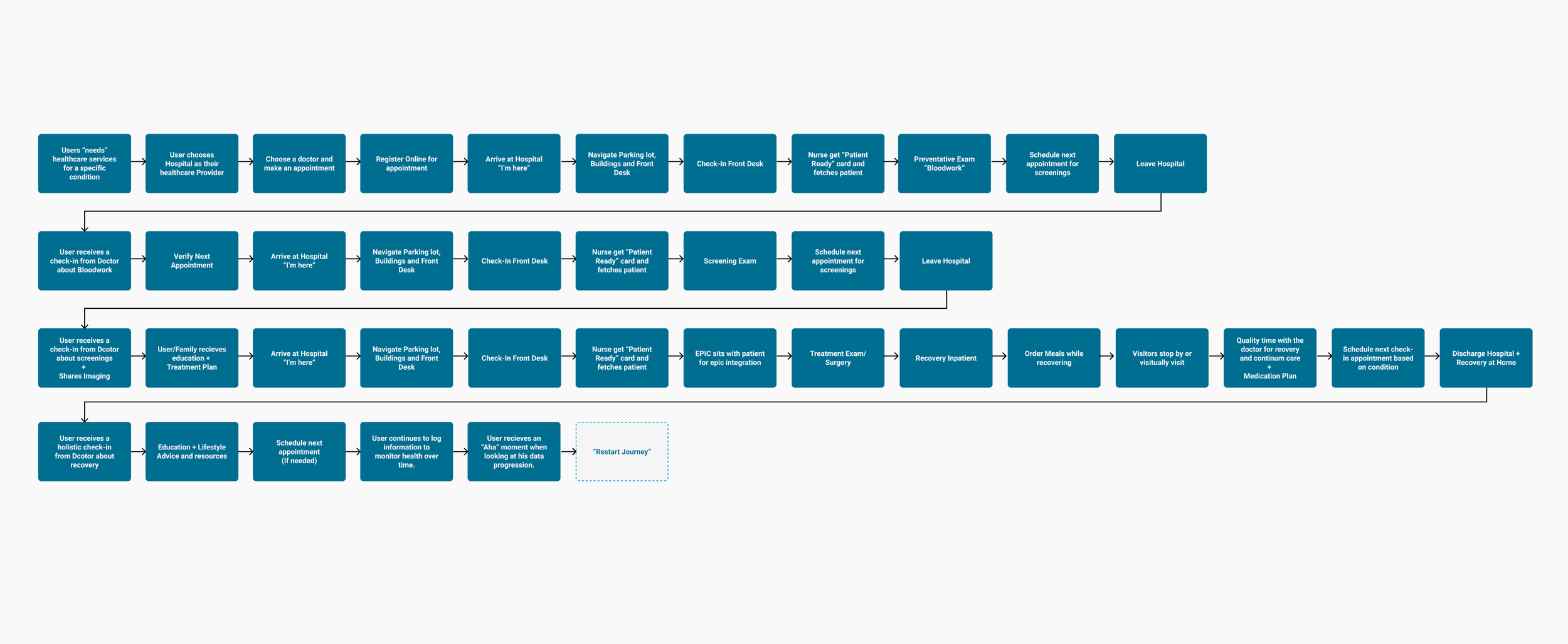Hoag Hospital Irvine Expansion
The pandemic reshaped American healthcare with new policy rules, highlighting the significance of primary care and the expansion of online services.
The Goal
As a UX Researcher, my goal was to provide the stakeholders with an inspiring vision of a hospital expansion in Orange County, Southern California. Sponsored by the leadership team; the team executed a research sprint and stakeholder workshop that grounded the team towards a unified user and provider experience.
The Results
The digital team works closely with the operation and architecture teams to collaborate with third-party vendors and the development team. Their goal is to guide the hospital towards a connected digital experience from primary care to specialty care. Their main focus is to bring together health records for a better overall experience.

How can we use technology to aid hospitals in shifting to preventive care and supporting well-being?
The Challenge
Business Problem
As hospitals shift towards preventative subscription-based care over traditional fee-for-service care. Technology has allowed for a shift towards digital online services and expanding beyond primary and specialty care and into async and at-home care.
Customer Problem
The health journey is confusing for all patients, including families and friends. Surprise invoices and hidden fees are common online and seniors continue to struggle with access to healthcare as internet demands increase.

The Research
The digital team interviewed a total of 13 existing inpatients to learn more about their current experience, expectations, and reactions to new digital concepts.
During eight (8) 45-minute validation interviews, we explored the ideal hospital experience (journey) and reactions to new ideas for physical and digital healthcare ecosystems and development.
Participants took a cart-sorting survey to help categorize new services and digital features, identifying which ones they needed, wanted, and/or would consider.
The digital team combined the findings from digestive, cancer, and women's institutes to uncover shared problems faced by users. Based on these findings, the team developed an ideal user for a new top-notch digital experience.
Demographic Exploration
-
Understanding the needs of a digestive patient was a great space for user feedback as it included users whom potentially qualifies as a cancer patient if left untreated.
-
With women's institute being built– our team needed to gain the alternative perspective of pregnant mothers and the struggles they undergo during pregnancy. In addition to the care need for their newborn child.
-
The mental and emotional toll on cancer patients is often linked to mortality rate and requires different needs for patients and the involved families.
-
To better understand the technological blockers for seniors, our team took several sprints to learn more about accessibility and caregiver needs to better adapt to the growing senior population.
Star Patient
The research and design team gathered information by talking to seniors, patients, and providers. We then shared this information through a company-wide workshop to get everyone on the same page. To make it easier to understand, we focused on a single user flow that would guide the data and research for a better experience.
Research Insights
Making friends & family part of my hospital experience
Inconsistent policies and lack of visitor resources make the whole experience harder for me and my family and friends to fully supporting me.
Health issues is emotionally and mentally draining
Give me the tools to feel better about my health situation, such as support groups and online resources to further prepare me for what’s ahead.
Give me more control over what happens next
Whether it’s staying another night or running another test, please give me options and help me feel like you haven’t already decided for me.
Lack of accessibility for our growing population
Patients who speak Mandarin, Korean, and Vietnamese need additional resources and services to help them fully understand what’s going on.
Patients want to feel more prepared
Patients want to be involved in planning their healthcare and want their loved ones involved too. It helps them feel empowered, supported, and ensures their holistic needs are met.
High-quality care should continue after discharge
Third-party services and referrals lack the quality and consistency patients have come to expect from this hospital. It’s up to the patient to maintain their care.

Consolidated Platform with Electronic Health Records
Standardizing a universal electronic health record system is not a simple task for hospitals working with private partners. Large vendors such as EPIC, Oracle, and NextGen are all working with insurance companies to cross check insurance eligibility and much more.
This hospital struggles to work with restrictive EHR systems and is considering building a consolidated data system built on one EHR and platform experience.
Patient Resource & Personalized Health Plans
Research shows patient often undergo a fragmented experience when it comes to their health. As hospital begin to learn more about our patients—providers can begin to offer on-demand specialty care needs and services. Personalizing patient messages, recommendations and resources, will become a part of the daily experience of healthcare.

Project Retrospective
Business Impact
The successful company workshop rewarded the design team with creating and overseeing the digital application for One Hoag Healthcare. No real-time data has been collected yet for the 5-7-year Irvine expansion plan. The digital team is now focused on creating a patient/provider portal and consolidating EHR systems for a unified experience.
Ongoing Challenges
Because of multi-vendor software solutions and a growing number of electronic health records that need consolidation, the fragmented experience will continue to persist until a unified experience is created. A new electronic health record system would need to start anew or merge with larger EHR partnerships such as EPIC.
What’s Next?
The hospital needs more information from the operations team to understand what is possible in terms of execution and technology within the expansion plan. Before moving forward, the hospital must address several challenges related to privacy, electronic health record systems, and working with insurance companies and private providers.






